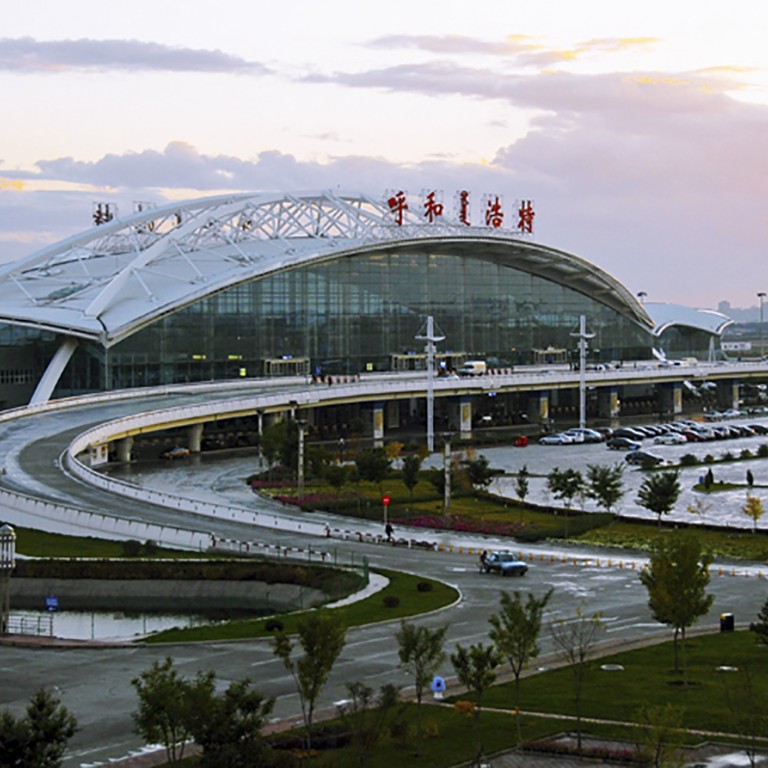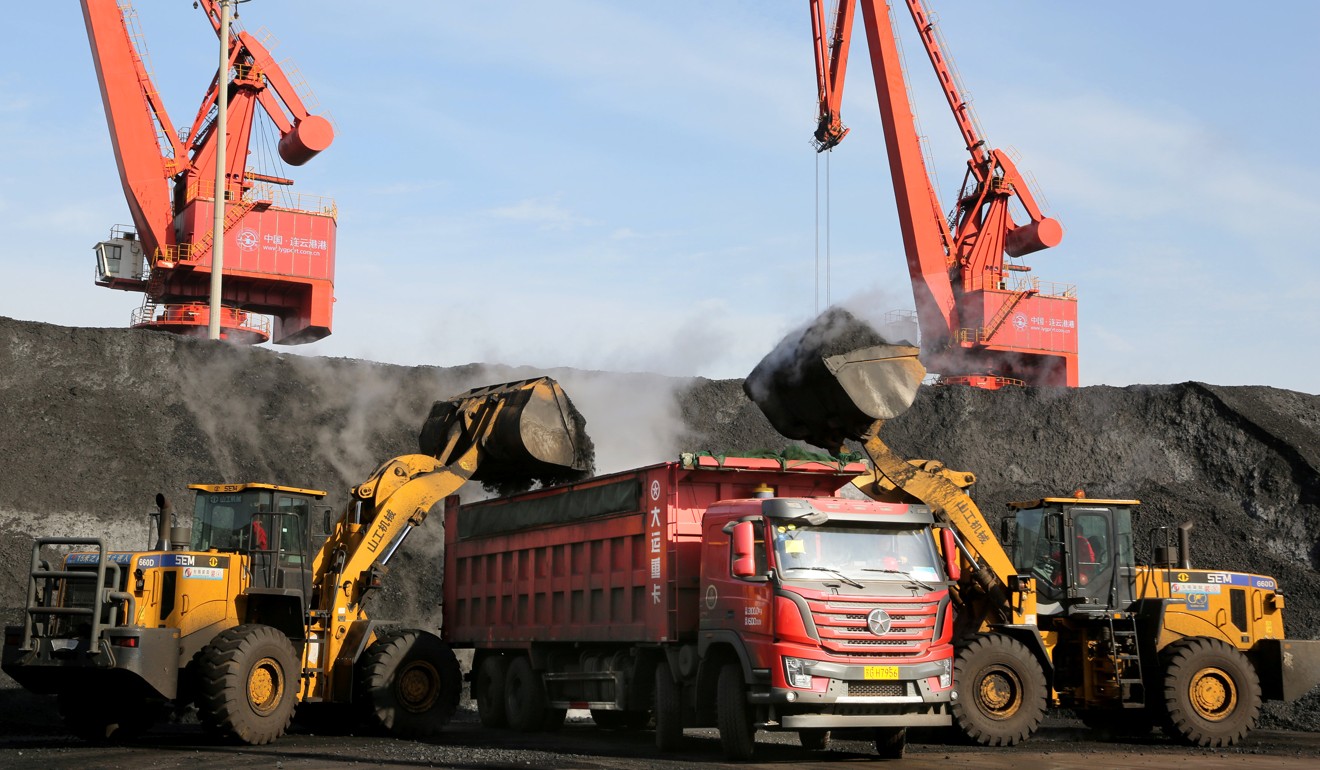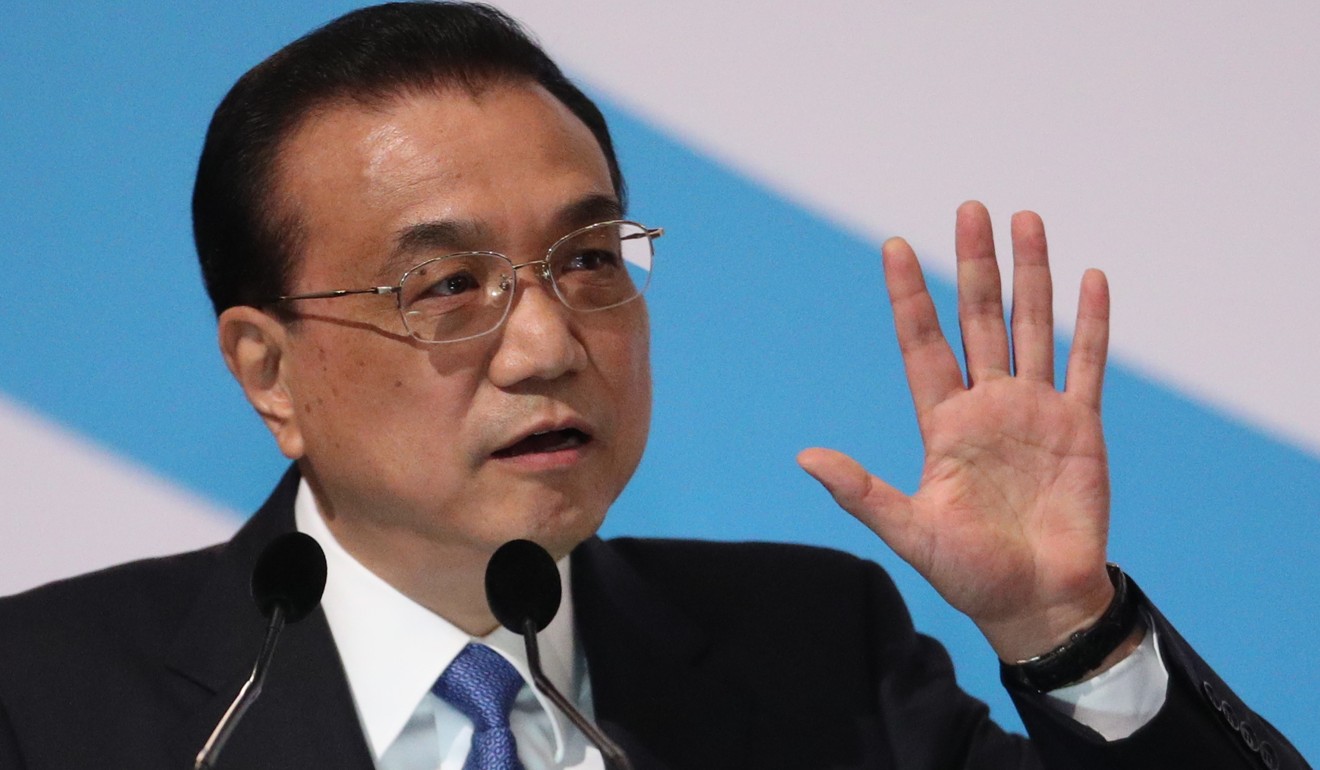
China seeks to fuel economic growth with coal mines and airport projects worth over US$15 billion
- Four mines in the north of the country will produce enough coal in one year to equal the United Kingdom's entire consumption for 18 months
- New airport in Hohhot, the capital city of Inner Mongolia, will cost US$3.28 billion as Beijing seeks to boost its slowing economy amid the US-China trade war
China approved four coal mines in a single day on Tuesday as part of its effort to boost its ailing economy, with the combined output capacity equal to the United Kingdom's entire coal consumption for 18 months.
The four projects in the north of the country, two in inner Mongolia and one each in Xinjiang and Shaanxi, will cost 11.7 billion yuan (US$1.75 billion) and will have the combined annual output capacity of 26 million tonnes.
The approval of the new coal mines suggests the government is also stepping back from its pollution control efforts, at least in part, to help boost growth.
Two weeks ago the National Development and Reform Commission (NDRC), the agency that approves all large infrastructure and industrial project in China, also approved three new airport projects costing 71.77 billion yuan (US$10.71 billion).

It is all fresh evidence that Beijing is increasingly leaning toward large-scale stimulus to bolster growth, a playbook that the Chinese government had used a decade ago to handle the impact from the global financial crisis.
The new airport projects include one in Hohhot, the capital city of Inner Mongolia, costing 22 billion yuan (US$3.28 billion).
The new airport plans to accommodate 28 million passengers a year by 2030, an ambitious target since the existing airport handled only 12 million passengers in 2018, and the total population of Inner Mongolia is only 25 million.
China approved only 222.6 billion yuan (US$33.22 billion) of infrastructure projects in the first half of 2018, with the figure surging to 1.02 trillion yuan (US$152 billion) in the second half, including 767 billion yuan (US$114.5 billion) in December alone.
The spree continued in 2019 with projects worth 513.5 billion yuan approved in January, according to Guotai Junan Securities, a Chinese brokerage that tracks new projects approved by the NDRC.
In an analysis report released on Tuesday, the national planning agency implied that additional endeavours are needed to consolidate an investment recovery, citing its statistics for planned projects that show approval usually comes 6-12 months ahead of the first actual investment.
The number of planned manufacturing projects, defined as those receiving NDRC approval and awaiting construction, dropped 5.6 per cent year on year in the fourth quarter with the trade war with the United States ongoing.
Planned infrastructure projects dropped 5.1 per cent in the last quarter, a decline whose impact on overall investment levels which could be felt later this year.
Overall, planned projects for the fourth quarter of 2018 dropped 8.9 per cent year on year.
“Corporate confidence has been weakened as the purchasing manager index stayed in contraction territory from the second half, profit growth slowed and there were insufficient demand both at home and abroad,” the agency said.
The NDRC did not release data on the value of the planned investments.
The accelerated nature of the project approval process, most of which are being financed by state-owned enterprises and local governments, has caused debate among Chinese policymakers, advisers and academia about how far this stimulus approach will go and how long it will last.
Questions marks over the debt-fuelled growth model gained some further ground after new loans in January reached a record monthly high of 3.2 trillion yuan (US$447 billion).
Premier Li Keqiang and the People’s Bank of China were both quick to deny speculation of the government turning to an all-out stimulus approach.
Li will address the parliamentary session during next week’s “Two Sessions” meetings in Beijing, and his report could include a target growth range of 6.0-6.5 per cent, higher fiscal deficit ratio at 3 per cent and a fixed asset investment growth target higher than last year’s actual 5.9 per cent, according to multiple reports.

The government boosted infrastructure investment spending, which was widely used in the past to achieve a quick economic recovery, as growth last year dropped to its lowest in 28 years.
The growth of infrastructure spending, largely funded by governments and state-controlled banks, slowed to 3.8 per cent from 19 per cent a year earlier.
Data from the National Bureau of Statistics suggested year-end investment had stabilised at a low level. It is due to release the January-February investment data on March 14.
According to Wang Yiming, deputy director of the Development Research Centre, a think tank under the State Council, “the downward pressure [on the economy] remains huge” despite government endeavours.
January’s index of crane usage, a key parameter watched by the government think tank, dropped 13.9 per cent month-on-month and 14 per cent year-on-year, suggesting construction activity remained weak at the start of the year.
“There’s nothing wrong with investment stabilisation. We must spend more effort on it,” Wang said last week.
Liu Yuanchun, deputy president of the Renmin University of China, believes concern over the fall of investment growth was overdone.
While certain supportive measures are necessary, the growth of investment “should be between 7-9 per cent in a counter-cycle environment,” he argued.
Larry Hu, chief China economist of Macquarie Capital, noted that China had already switched to a stabilisation mindset in July and embarked on major monetary stimulus by announcing a broad cut of the required reserve ratio in January.
“It’s still too early for policymakers to step up stimulus to level three, which includes a big loosening in local government financing vehicle [borrowing] and property policies,” he said, suggesting policymakers may consider this in the third quarter if there is a risk that growth would fall below the 6 per cent lower bound of this year’s expected growth target range.

